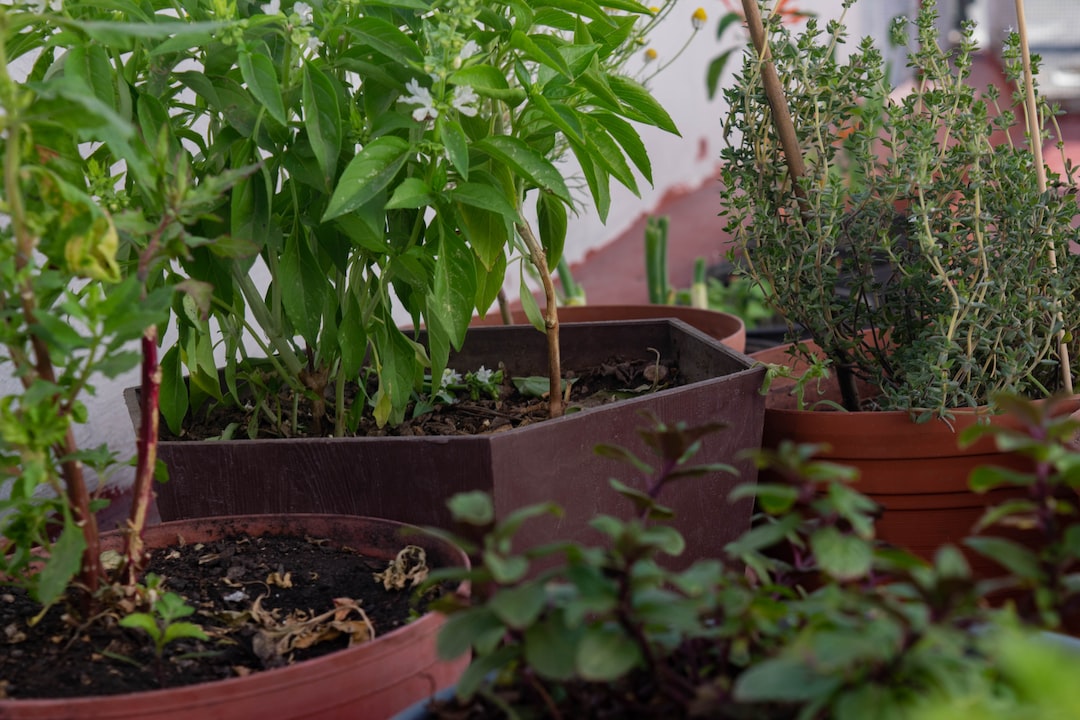Say Goodbye to Stingy Nettles: Tips and Tricks for Effective Removal

Nettles are a common and often unwelcome sight in outdoor spaces such as gardens and yards. These plants, known for their stinging hairs, can cause discomfort and irritation if they come into contact with the skin. Nettles can quickly take over an area if left unchecked, making it important to understand how to identify and remove them effectively. In this article, we will explore the characteristics of nettles, the dangers of nettle stings, prevention strategies, natural remedies for removal, essential tools and protective gear, step-by-step instructions for safe removal, tips for dealing with nettle roots, long-term prevention strategies, and ways to enjoy your outdoor space without the presence of nettles.
Key Takeaways
- Nettles can be identified by their serrated leaves and stinging hairs.
- Nettle stings can cause itching, swelling, and pain, but can be treated with natural remedies like vinegar or plantain leaves.
- To prevent nettles from growing in your garden or yard, regularly mow and weed the area.
- Chemical-free solutions for nettle removal include digging up the roots or using a vinegar and salt solution.
- Essential equipment for nettle removal includes gloves, long sleeves, and pruning shears.
Understanding Nettles: Identification and Characteristics
Nettles are perennial plants that belong to the Urticaceae family. They are known for their stinging hairs, which contain chemicals that cause a painful reaction when they come into contact with the skin. Nettles typically grow in moist and fertile soil, and they can reach heights of up to six feet. The leaves of nettles are heart-shaped with serrated edges, and they have a rough texture. The stems are covered in stinging hairs as well.
Identifying nettles in your garden or yard can be relatively easy once you know what to look for. The best way to identify nettles is by their leaves and stems. Look for heart-shaped leaves with serrated edges and a rough texture. The stems should be covered in stinging hairs that are visible to the naked eye. It’s important to note that not all plants with stinging hairs are nettles, so be sure to look for the specific characteristics mentioned above.
The Dangers of Nettle Stings: Symptoms and Treatment
Nettle stings can cause a range of symptoms, from mild irritation to more severe reactions. When the stinging hairs come into contact with the skin, they release chemicals that cause a burning and itching sensation. This can be accompanied by redness, swelling, and the formation of small bumps or blisters. In some cases, nettle stings can also cause an allergic reaction, which may include symptoms such as difficulty breathing, dizziness, and hives.
If you or someone you know gets stung by a nettle, there are several steps you can take to alleviate the symptoms. First, wash the affected area with soap and water to remove any remaining stinging hairs. Applying a cold compress or ice pack can help reduce swelling and numb the area. Over-the-counter antihistamines and hydrocortisone creams can also provide relief from itching and inflammation. If the symptoms persist or worsen, it’s important to seek medical attention.
Prevention is Key: How to Avoid Nettles in Your Garden or Yard
| Prevention Tips | Effectiveness |
|---|---|
| Wear protective clothing | High |
| Use gloves when gardening | High |
| Remove nettles from your garden | High |
| Apply herbicides | Medium |
| Keep your garden tidy | Medium |
| Use vinegar or salt to kill nettles | Low |
Preventing nettles from growing in your garden or yard is the best way to avoid the discomfort and irritation they can cause. There are several strategies you can employ to keep nettles at bay. First, make sure to regularly weed your outdoor space to remove any young nettles before they have a chance to establish themselves. It’s also important to keep your garden or yard well-maintained by mowing the grass regularly and removing any debris or overgrown vegetation.
Another effective prevention strategy is to create physical barriers that prevent nettles from spreading. This can be done by installing a layer of mulch or landscape fabric around plants and in areas where nettles are likely to grow. Additionally, planting dense ground cover plants can help shade out nettles and prevent them from taking root.
Chemical-Free Solutions: Natural Remedies for Nettle Removal
If you prefer to avoid using chemical herbicides in your garden or yard, there are several natural remedies that can help remove nettles effectively. One popular method is to pour boiling water over the nettles, which will kill them and prevent regrowth. Another option is to use vinegar or saltwater solutions, which can be sprayed directly onto the nettles. These solutions work by dehydrating the plants and inhibiting their ability to photosynthesize.
It’s important to note that while natural remedies can be effective, they may also harm other plants in your garden or yard. Therefore, it’s important to apply these remedies carefully and selectively target the nettles. Additionally, it may take multiple applications to completely eradicate the nettles, so patience and persistence are key.
Tools of the Trade: Essential Equipment for Nettle Removal

Having the right tools for nettle removal can make the process much easier and more efficient. Some essential tools for nettle removal include a pair of gardening gloves, a long-sleeved shirt, and long pants to protect your skin from stings. A sturdy pair of pruning shears or a weed trimmer can be used to cut down nettles, while a garden fork or trowel can help with digging up the roots.
When choosing tools for nettle removal, it’s important to consider their quality and durability. Look for tools made from high-quality materials that can withstand the rigors of nettle removal. Additionally, consider the size and weight of the tools, as well as their ergonomic design, to ensure they are comfortable to use for extended periods of time.
Safety First: Protective Gear for Nettle Removal
In addition to having the right tools, it’s important to wear protective gear when removing nettles to minimize the risk of stings. This includes wearing gardening gloves that are thick enough to prevent stinging hairs from penetrating the fabric. A long-sleeved shirt and long pants can provide additional protection for your arms and legs.
If you are particularly sensitive to nettle stings or are working in an area with a high concentration of nettles, consider wearing additional protective gear such as a face mask and safety goggles. These can help protect your face and eyes from stinging hairs that may become airborne during the removal process.
Step-by-Step Guide: How to Remove Nettles Safely and Effectively
Removing nettles safely and effectively requires a systematic approach. Here is a step-by-step guide to help you through the process:
1. Put on protective gear: Before you begin, make sure to put on gardening gloves, a long-sleeved shirt, and long pants to protect your skin from stings.
2. Cut down the nettles: Use pruning shears or a weed trimmer to cut down the nettles at ground level. Be careful not to touch the stinging hairs with your bare skin.
3. Dig up the roots: Use a garden fork or trowel to dig up the nettle roots. Start by loosening the soil around the base of the plant, then gently lift the roots out of the ground. Be thorough in removing all of the roots to prevent regrowth.
4. Dispose of the nettles: Place the cut nettles and roots in a garbage bag or compost bin for disposal. Do not leave them on the ground, as they may still be able to regrow.
5. Repeat as necessary: Nettles can be persistent, so it may take multiple rounds of removal to completely eradicate them from your outdoor space. Be diligent in monitoring for regrowth and repeat the removal process as needed.
Dealing with Nettle Roots: Tips for Complete Removal
Removing nettle roots is crucial for preventing regrowth and ensuring long-term success in getting rid of nettles. When digging up nettle roots, it’s important to be thorough and remove all of them from the ground. Even small fragments of root left behind can potentially regrow into new plants.
To ensure complete removal of nettle roots, use a garden fork or trowel to loosen the soil around the base of the plant. Gently lift the roots out of the ground, taking care not to break them. Inspect the area for any remaining roots or root fragments and remove them as well. It may be helpful to sift through the soil with your hands to ensure that no roots are left behind.
Maintaining Nettle-Free Areas: Strategies for Long-Term Prevention
Once you have successfully removed nettles from your garden or yard, it’s important to implement strategies to prevent their regrowth. Here are some tips for maintaining nettle-free areas over the long term:
1. Regularly monitor for regrowth: Nettles can be persistent, so it’s important to regularly inspect your outdoor space for any signs of regrowth. If you spot any new nettles, remove them immediately to prevent them from spreading.
2. Mulch and landscape fabric: Applying a layer of mulch or landscape fabric around plants and in areas where nettles are likely to grow can help prevent their regrowth. These barriers will block sunlight and inhibit the growth of new nettles.
3. Plant dense ground cover: Planting dense ground cover plants can help shade out nettles and prevent them from taking root. Choose plants that spread quickly and have thick foliage to create a barrier against nettles.
4. Regular maintenance: Keep your garden or yard well-maintained by mowing the grass regularly and removing any debris or overgrown vegetation. This will help prevent nettles from establishing themselves and spreading.
Nettle-Free Living: Enjoying Your Outdoor Space Without the Sting
With proper prevention strategies and regular maintenance, you can enjoy your outdoor space without the presence of nettles. Here are some tips for creating a nettle-free environment:
1. Create designated areas: Designate specific areas of your garden or yard for activities such as gardening, playing, or relaxing. Regularly monitor these areas for nettles and remove them immediately to maintain a nettle-free environment.
2. Install physical barriers: If you have specific areas where nettles are a persistent problem, consider installing physical barriers such as fences or raised beds to prevent their spread. This can help create a nettle-free zone within your outdoor space.
3. Choose nettle-resistant plants: When selecting plants for your garden, choose varieties that are known to be resistant to nettles. These plants are less likely to attract nettles and can help create a nettle-free environment.
4. Regular maintenance: Continue to practice regular maintenance in your garden or yard to prevent nettles from establishing themselves. This includes weeding, mowing the grass, and removing any debris or overgrown vegetation.
Nettles can be a nuisance in outdoor spaces, but with the right knowledge and strategies, they can be effectively removed and prevented from regrowing. By understanding the characteristics of nettles, knowing how to identify them, and taking steps to prevent their growth, you can enjoy a nettle-free garden or yard. Natural remedies, essential tools, and protective gear can aid in the removal process, while thorough root removal and long-term prevention strategies will help maintain a nettle-free environment. With these tips and strategies in mind, you can enjoy your outdoor space without the sting of nettles.



